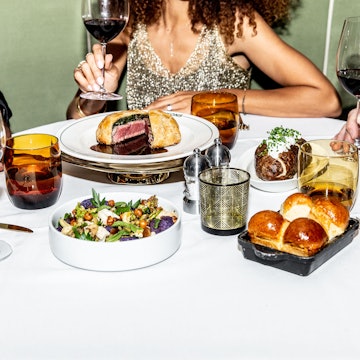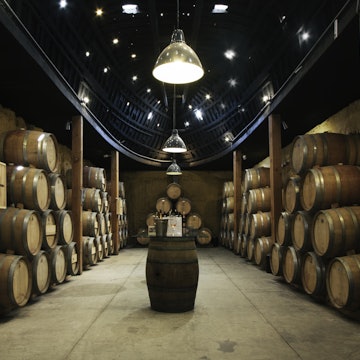
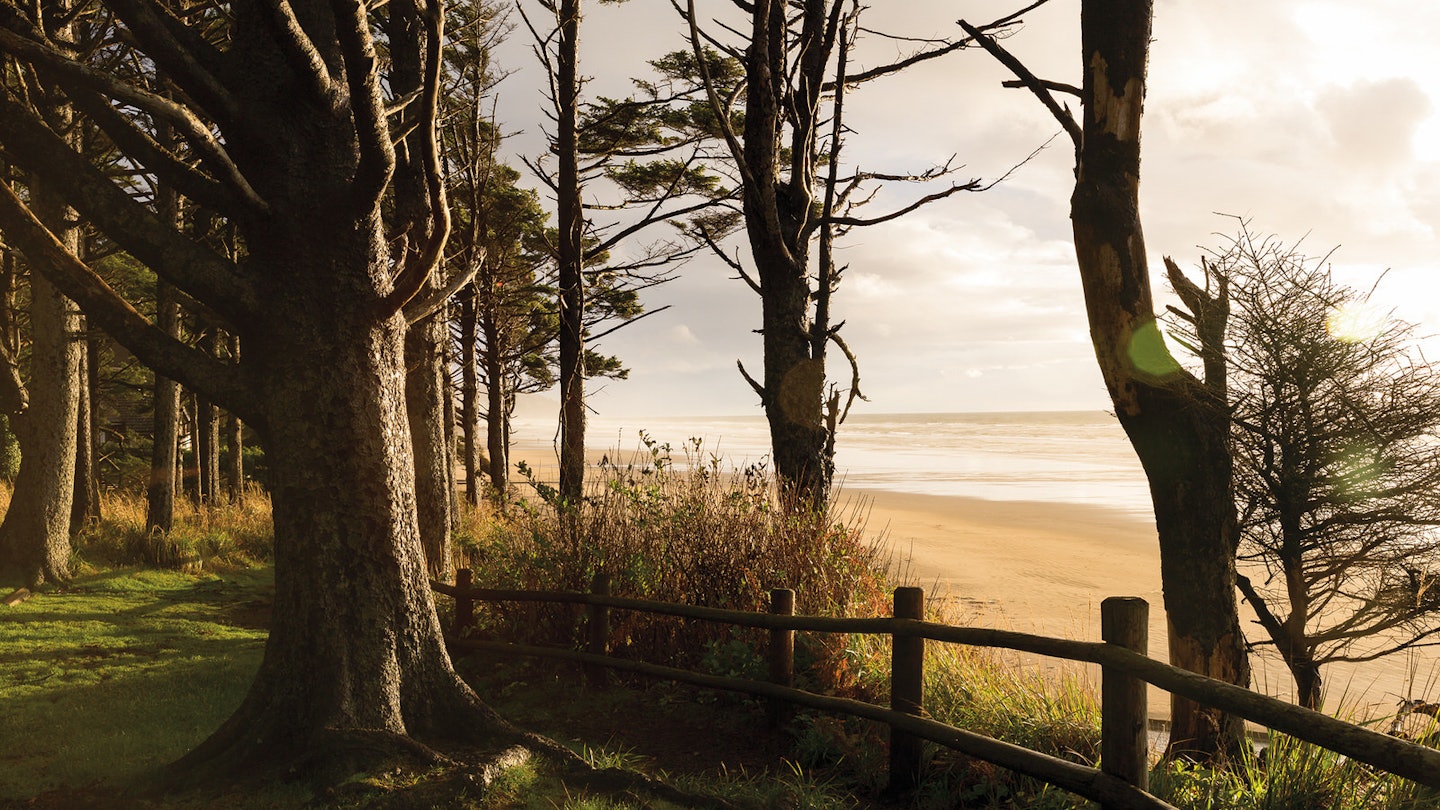
Take a leisurely trip around Oregon to experience its unique food culture, from quirky Portland’s outstanding culinary scene to peaceful wine country and the northern coast, for foraging and legendary seafood.
Time seems to pass slowly in Oregon, in a languorous, unhurried drip. Maybe it’s in sympathy with the climate: Oregon specializes in rain, with peeks of bright sun and rainbows, and reliably misty nights.

At times, the dampness seems inescapable. But the conditions have created something special: a backdrop of verdant, fertile farmland and moody coastline, and a swath of passionate, close-knit communities that live by a philosophy of food innovation driven by top-quality local produce – from craft beer and plump pinot grapes to seafood plucked direct from cool Pacific waters.
Our food- and drink-lovers’ trip focuses on the northwestern corner of Oregon, beginning in the state’s largest city, Portland, known as one of America’s best food destinations.

Arrive in Portland hungry
By now visitors know this city's unofficial slogan: ‘Keep Portland Weird.’ It’s a defiant declaration, one that salutes the town’s independent spirit, liberal attitude and taste for the offbeat. But for all that, Portland is also curiously hard to pin down. A cluster of girder-heavy bridges spanning its Willamette River lend the town an industrial air markedly at odds with the trail-rich, dense evergreen forests that surround it. To its immediate south lies Oregon’s sprawling vineyard country, but the city is arguably best known not for wine, but for its scores of craft microbreweries – more than any other city in the world.
It’s also known for its flourishing coffee culture, so well known, in fact, that one of the city’s newer coffeehouses, Proud Mary, traveled more than 8000 miles to lay down roots here. The 2017 arrival of this revered Australian coffee brand in a town inundated with coffee – Portland has more than 40 roasters, most also functioning as cafés – was a gutsy move. But founder Nolan Hirte – red-bearded and merry as they come – and his crew gained a following quickly for their space on mural-heavy Alberta Street, in the city’s northwest quadrant. It was built without an architect or designer, but a feng shui expert was consulted.

‘This place is about coffee, food – of course – but also, vibes!’ Hirte says in his contagiously spirited tone. Custom espresso machines are set into low counters to encourage conversation with baristas as they prepare flights of international coffee or specialty teas – like the gaba oolong, a high-antioxidant brew with sweet honey notes. The food menu here – from hotcakes to potato hash, with fresh ingredients and laid-back flair – has a distinct Australian twang, but it has proven as popular in downtown Portland as it is at the Melbourne outpost.
Portland’s ambitious food scene has likewise embraced an authentic approach to flavor. At pan-Asian restaurant Departure, dishes like rhubarb, plum and yuzu sushi sit beside halibut-rich Thai tom yum. This swanky, minimalist-styled space, perched atop the Nines hotel in the heart of downtown, fills with samba music and well-heeled diners each evening. Chef Gregory Gourdet takes his inspiration from across the Asian continent, but allows the bounty of ingredients plucked straight from their 13-bed rooftop garden to inform his menu. ‘Honoring the seasons is what Portland food is known for,’ he says, as he looks out over the city through the floor-to-ceiling windows. ‘You have to explore the city’s food options over a few days, and go quadrant by quadrant. Otherwise it’s impossible. It’s so varied.’

The Southwest quadrant – the city’s cultural heart – is as good a place as any to start. Just a few blocks away, in ‘pastry luncheonette’ Maurice, strings of dried herbs and Portland roses garnish the ceiling above tiny, sunlit white booths. The menu showcases simple, seasonal dishes, such as oysters, soups and greens.
The big draw here, though, isn’t savory dishes, but the whirl of delicate confections created by pastry chef Kristen Murray, who delights in experimenting with flavorful and unusual ingredients such as anise, rosemary and local flowers. Her signature black pepper cheesecake, topped with seasonal fruit – today, it’s juicy plum slices – is exquisitely creamy. ‘This is not a restaurant,’ she says, earnestly. ‘It’s a love project.’
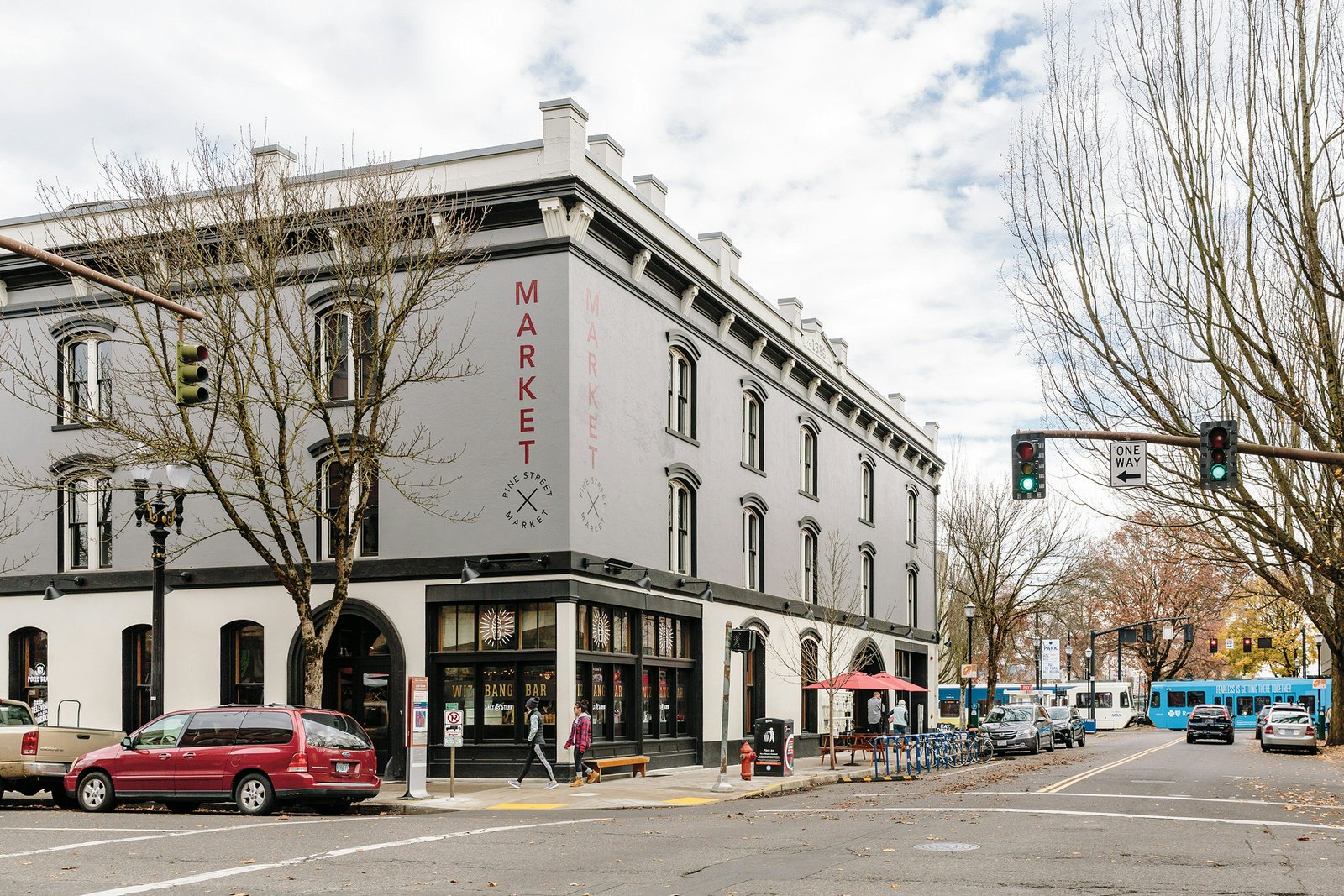
A short distance westward toward the Willamette River, the nine small booths that make up Pine Street Market recreate the food cart culture that has boomed in Portland in the last decade, but here they are protected from the city’s ubiquitous drizzle. At Kim Jong Smokehouse the cuisine is a cross between Korean street food and Southern barbecue, delivering the oozing egg, marinated meat and perfectly scorched rice of a bibimbap. Each bite combines sweet and smoky beef with the heat of kimchi and red pepper flakes; pickled vegetables throw in powerfully tangy punches.
Almost all the seats at the low wooden tables are occupied, even on a weekday, creating a steady clamor punctuated by occasional ‘Cheers!’ from a group of construction workers sloshing together glasses of local IPA. Festoon lights hang above diners, and baby strollers bookend the benches. Cooks behind counters work shoulder-to-shoulder among cooking flames and rising steam, and beyond the sizzle it’s still possible to catch hooks of ’90s hip-hop songs playing overhead. On weekends, it’s chaos, but that’s part of its appeal: eat, build kinship, people-watch.
A microcosm, then, of Portland itself, which makes a habit of raising an appreciative toast to life’s eccentricities with a holy trinity: good food, good coffee and good beer.

The lure of the valley
Less than an hour’s drive south of Portland, lush emerald hills and golden plains are covered by mist under gray skies in the fall. Bounded by mountain ranges to the east, west and south, the tranquil Willamette Valley is home to more than 500 of Oregon’s 700 wineries. Its moderate maritime climate and cool temperatures at night even in summer months are ideal conditions for the petulant, delicate pinot noir, which makes up more than half of the grapes grown here. In the north of the valley, the Chehalem Mountains’s rich, volcanic basalt soil lends a blackberry, plum and cola-esque finish to pinot noir.
On a plateau at the top of the mountain is leading producer Ponzi Vineyards, owned and operated by sisters Maria and Luisa Ponzi, whose parents helped to pioneer the Oregon winemaking industry in the 1960s.

Today, they are seeing an influx of Portland dwellers seeking out the peace – and more affordable housing – of the valley; from April through November their 150-seat mountaintop tasting room is filled with visitors sampling local varietals by the fireside. They plan to expand their 140 acres of vines gradually over the next decade. ‘We want to make sure we continue our parents’ legacy,’ Maria says. ‘Working with family, there are definitely both good and really bad days,’ she admits, leaning in with a conspiratorial smile, ‘but we truly love what we do.’
Throughout the Willamette Valley, among the rows and rows of grapevines, the hop yards that supply Portland’s many breweries are hard to miss: the plants are trained to climb up 12-foot-tall poles. But at one brewing outfit in the Northwestern part of the valley in Forest Grove, there’s not a hop to be seen. SakéOne specializes in premium sake, distilled from the pure, cool waters of the Willamette, and using rice grown in California’s Sacramento Valley.
‘Put it in a glass! We’re helping people get over that hump of hot sake in little cups,’ says the company’s president, Steve Vuylsteke. Brandishing his own glassware, he leads a sampling session in their tasting rooms. SakéOne was the first American-owned and -operated sake brewery in the country. Their Momokawa sake comes chilled, and tastes crisp, with enticing hints of melon and apple. The room’s tasting glasses empty alarmingly fast.
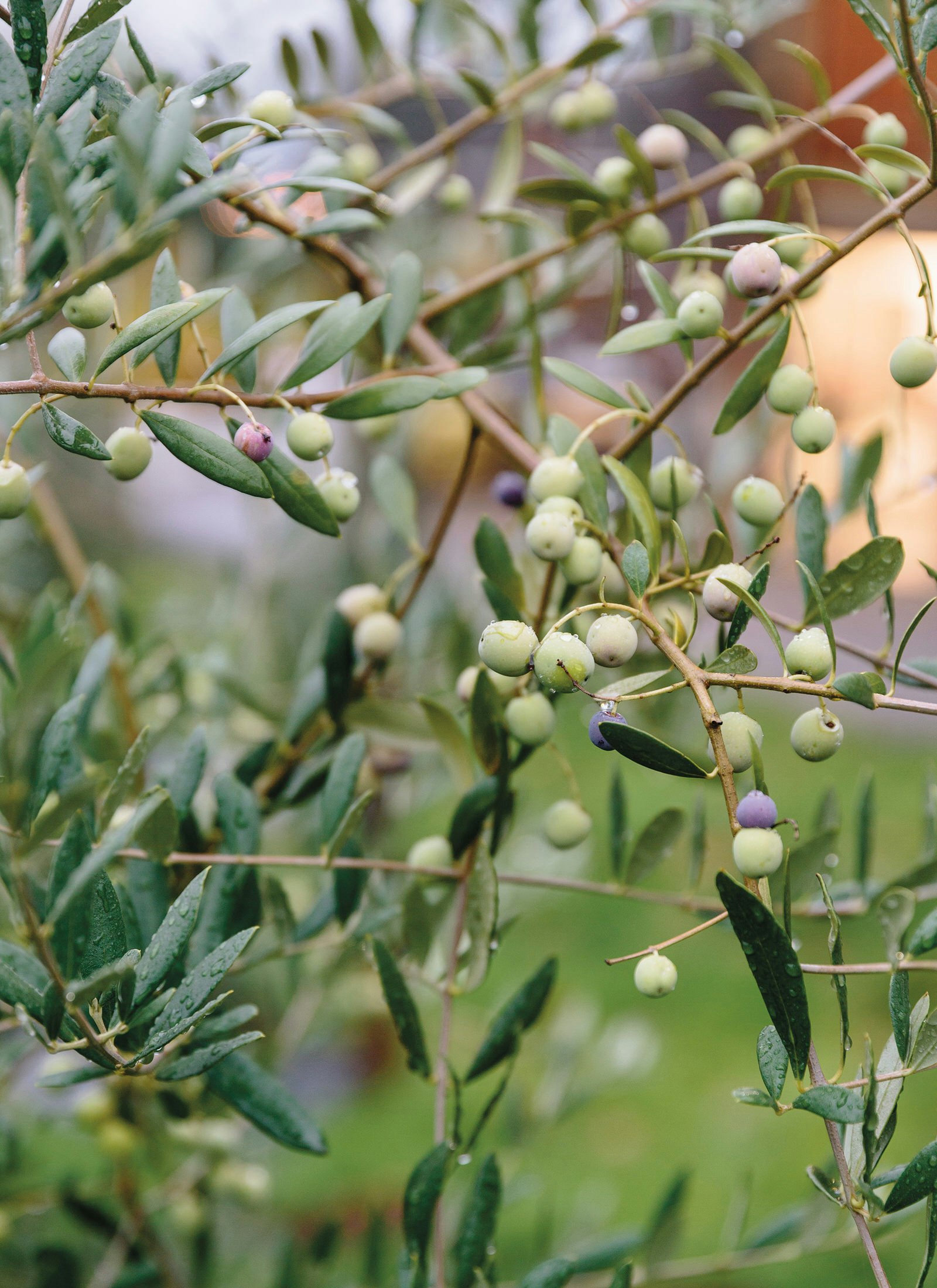
Thirty minutes south in the Dundee Hills is a different kind of tasting room. Visitors sniff and sip, but never swirl here. Instead they use their hands to warm and ‘open up’ the liquid. They are looking for notes of cut grass or tomato vine in this olive oil, produced at the state’s only olive mill, Red Ridge Farms.
This is a bounteous place: it also produces grapes, lavender and honey across 120 acres of land. ‘Olives grow better on flat land. Grapes are better on hills. But somehow we manage to produce both very well,’ says master miller Paul Durant, whose parents started the vineyard 45 years ago. He stands in the mill at a huge wooden bin filled with Tuscan olives waiting to be processed, sifting through handfuls of the fruit by hand. Through glass doors, the farm stretches out like a rustic Italian landscape beyond him: vines lining slopes, olive trees and herb gardens – all bordered by towering trees and dustings of vibrant flower bushes.

Throughout the valley, misty fall weather adds to the region’s fertile tranquility. A heavy, wet haze blankets small Abbey Road Farm at the top of the Dundee Hills. Emily Everett, who manages the property, shrugs, looking at the white layer of mist hovering behind the mini donkeys, sheep and grazing llamas. Emily and chef Eric Bartle make breakfast for the farm’s bed-and-breakfast guests using vegetables and herbs gathered from the quarter-acre garden, and eggs from the chickens (all named Betty). ‘You can get great food both here and in Portland,’ Everett says. ‘But what you can’t get in the city is the serenity of the valley. It’s so quiet here.’

Seek the seaside
Kelly Laviolette of Kelly’s Brighton Marina is easy to spot on the dock against the utterly gray sky in his fluorescent fisherman’s coat. He’s a one-man show, renting out metal rings for catching crabs, renting out boats, talking to guests, and using his bare hands to pull Dungeness crabs from huge steaming pots on the outside patio. An enormous dog and a sprinkling of kittens roam around the benches and firepit outside. ‘It’s all about good vibes,’ Laviolette says, philosophically.
Due west of Portland in Rockaway Beach, this spot is right off of a bend on the Oregon Coast Highway, which separates it from a splattering of a few houses standing opposite on tree-filled mountains. Though few people are seen, this stretch of Oregon exudes the hardiness of a mining town. But in May and June, the bright green covered area of Kelly’s marina is crowded with families cleaning and cooking their catches. Laviolette has also seen priests in clerical attire, bachelorette parties, and awkward bands of co-workers go crabbing here. But he especially appreciates the lone crabbers who come to quietly pass a day looking out onto the Nehalem Bay for ‘a little crab therapy,’ as he calls it.

An hour north at Fort Stevens State Park, ranger Dane Osis knows all about the therapeutic benefits of nature. He’s lived on the coast of Oregon his whole life and has been working at the park for 13 years. Towering over most guests and exuding the patient aura of a teacher, he’s the local mushroom guru, guiding fungus hunters through the park’s trails, where he points out specimens that look like just another pile of leaves to a less discerning eye.
‘Mushroom foraging in the fall is a huge thing in Oregon. October is the peak for the edible variety,’ says Osis. He stops mid-sentence when he spots a young matsutaki mushroom poking out, and gleaming white, nestled in the grass. Crouching, he slowly twists it up from the ground. This young one still has its cottony veil attached under the cap – an especially coveted detail. Osis pokes the veil open with the small knife that usually dangles from his belt, releasing a light cinnamon scent. Oregon’s coast is especially good for growing this particular variety of mushroom, and most of those harvested here are exported directly to Japan, where matsutakis are so sought-after that they can fetch $200 a pound. ‘These little things,’ he says, lightly shaking it as he holds it close to his face, ‘are precious.’

Twenty minutes’ drive away, as the leafy trails of the state park recede to the west, the small, seaside town of Astoria brings suburbia back with a bump; it is oddly familiar and unassuming, like a backdrop to an ’80s movie. It seems a mildly forgettable place except for the noisy line of people trailing through a parking lot. In an old boat permanently docked here, the BowPicker is a takeout joint that serves only one dish: regional albacore tuna with steaming steak-cut fries.
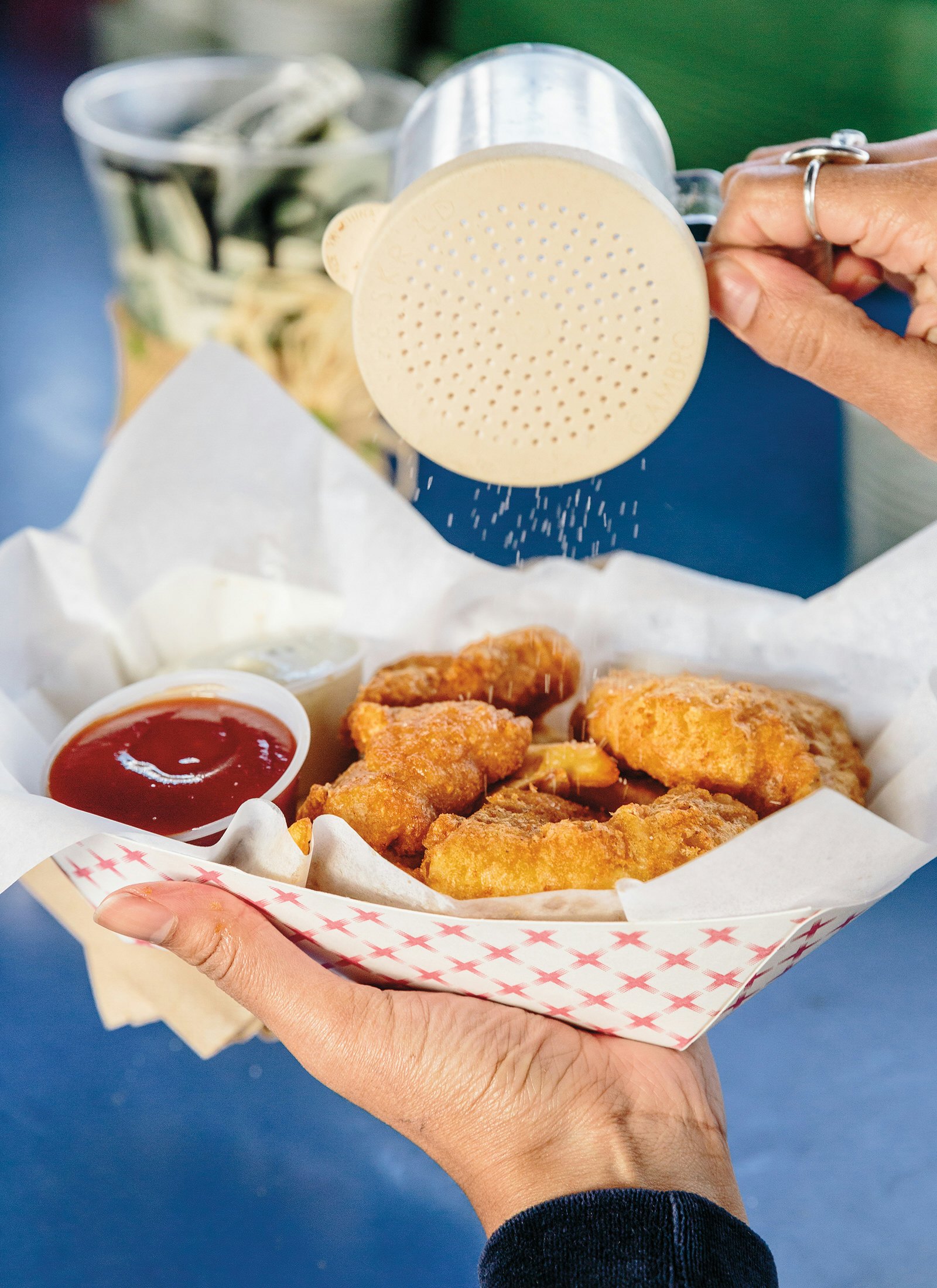
Customers standing in line shout their orders to the women hollering cheerily through a tiny window on the boat’s hull. The breeze is causing more than a few shivers and foot stamps, but hungry customers are thankful it’s not stronger – too much wind blows out the BowPicker’s stove, and keeps them from opening their hatch at all.
Here, as throughout the state, the weather is a dominant force – it grays out the landscape, shuts up shops, dampens spirits. But it also sweetens grapes, ripens olives, produces verdant forests and feeds Oregon’s cool, clean rivers, producing such a bounty of local ingredients that Oregonians, resilient and resourceful, can only shrug and smile wryly as ever-fine mist descends again over its streets and valleys.
This article appeared in the fall edition of Lonely Planet Magazine (US). Summer Sewell travelled to Oregon with support from Travel Oregon. Lonely Planet contributors do not accept freebies in exchange for positive coverage.
https://shop.lonelyplanet.com/products/washington-oregon-and-the-pacific-northwest-travel-guide-7








